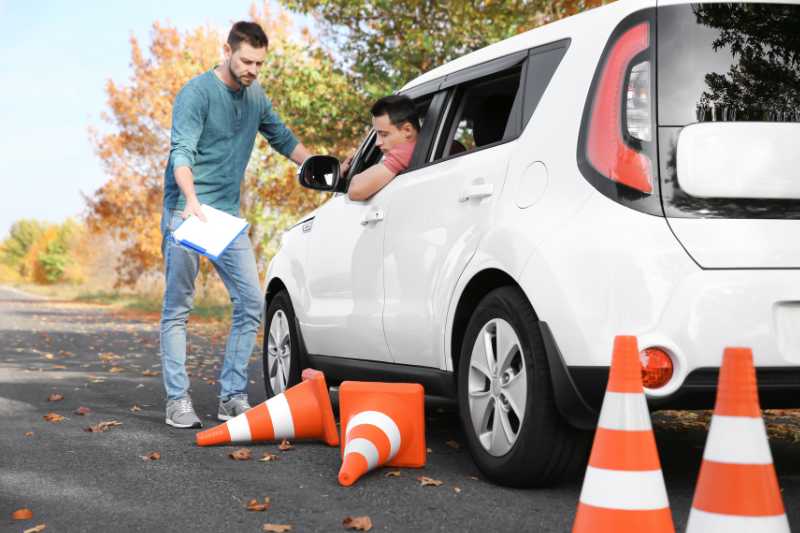This is a much more controversial topic than it might seem at first glance. How does one reliably determine what is a good driver and what is a bad one? There is probably no single universally accepted criteria, so we are going to give readers the benefit of three different approaches and allow them to make up their own minds.
The Vinci Autoroutes survey
According to a recent survey, the average European believes that to find the worst drivers on the continent, one only has to look for drunk, dangerous, and aggressive drivers.
The survey was commissioned by the French company Vinci Autoroutes and carried out by Ipsos in March last year. It found that 79% of European drivers do not have a positive view of their fellow drivers. On the other hand, 97% of them were extremely proud of their own driving skills, which they described as ‘excellent’.
The Ipsos poll was conducted among 12,400 drivers. It asked 1,000 or more drivers in each of the 11 countries that partook about how they viewed other drivers on the road and what they thought of their own driving skills.
According to the results, it seems that visitors who plan to drive on European road roads in the near future might be in for somewhat of a shock.
No less than 42% of drivers from Poland expressed the belief that driving has everything to do with ‘every man for himself’. The percentage of Spanish drivers who held the same view was only 7%. Around 25& British drivers conceded that they might not be the same meek person as always once they get behind the steering wheel of a car.
The poll also took a closer look at national stereotypes – and actually found them to be true in many cases. Only 16% of drivers from Italy stated that other Italian drivers were polite behind the wheel, while 14% of French drivers conceded that they were often stressed when driving a vehicle.
Perhaps unsurprisingly, most British drivers expressed rather negative views about their fellow drivers, expressing the belief that only 68% of them paid any attention to the road while driving and that less than 50% were courteous and calm.
When it came to expressing a judgment on other nations’ drivers, things looked slightly different, though. German drivers, who are known for driving at breakneck speeds on their autobahns, believed that only 30% of other nation’s drivers acted aggressively behind the wheel and that even fewer of them could be called irresponsible.
Britons and Spaniards were the least judgmental when commenting on other European drivers, with ‘only’ 70% of them having a negative view of their fellow drivers in mainland Europe. If you think that’s a high percentage, wait until you find out about the rest.
If you are going to Greece this holiday season, you might want to make sure you get a full night’s sleep and a cup of strong coffee before you brave their roads. The Greeks were particularly negative about the driving habits of other European drivers, with a whopping 91% of them having nothing good to say about their peers.
The strange thing is, however, that they were also at the top of the list when it came to acknowledging their own uncivil driving behavior. About 50% of Greek drivers reported honking, swearing, having arguments with other drivers, sometimes jumping out of the car to pursue these arguments, and overtaking other cars on the wrong side. Greek drivers also admitted to being the most likely to ‘tailgate’ a slow driver.
So if you still want to drive on Greek roads this holiday season, don’t forget to watch the rearview mirror like a hawk. But if tailgating really scares you, consider rather going to Slovakia, where you will find the lowest percentage of drivers making themselves guilty of this potentially deadly offense.
Greece also came out at the top of the list for drivers who have no problem with using a smartphone when driving. No less than 77% of Greek drivers acknowledged that they make phone calls while driving, and 83% of them conceded that they regularly used their phones behind the wheel. If this scares you, head for Spain, where ‘only’ 62% of drivers expressed a preference for using their smartphones while driving.
Greece (yes, Greece again) also scored top marks for downright dangerous driving, with nearly 33% of drivers acknowledging that they often skipped red lights, drove too fast, did not slow down for roadworks, and failed to keep a safe following distance.
On top of that, a mere 20% of Greek drivers were prepared to say something positive about other European nations’ drivers. Here also, the United Kingdom topped the list, with half of them having no problem with saying something nice about their mainland European rivals.
The Forbes ranking: number of road deaths per million inhabitants
It might be worth your while to take extra care the next time you get behind a wheel or cross a road in Latvia, Lithuania, or Estonia. Despite the dropping number of road fatalities throughout Europe, the rapid economic growth in these countries has caused a rapid increase in the number of cars on the road. This, in turn, has increased the risk of accident-related deaths.
The three countries came out on top in the first-ever ranking Forbes published of the continent’s most dangerous drivers. The firm compiled the list by calculating road deaths/million across 28 European nations using data from the International Road Traffic and Accident Database and the European Commission.
The ranking gathered road and traffic accidents from 28 member countries of the OECD.
In this ranking, Greece (perhaps surprisingly?) did not come out on top but took 4th place. Cyprus, its nearby island neighbour, was only slightly behind in position number 8. The top 10 list was, however, dominated by Eastern and Central European nations. Countries such as Poland, Hungary, Slovenia, and the Czech Republic all reported more than 100 road deaths for every one million inhabitants per year. There is, nevertheless, a huge gap between these nations and Lithuania, where more than 200 road deaths per million inhabitants were recorded.
It shouldn’t come as too much of a surprise that the 3 Baltic states notched up the worst road safety data in all of Europe. With the number of cars on the road increasing so rapidly and without the necessary improvements in road infrastructure and increasing awareness of unsafe driving practices, it was to be expected.
According to Lithuanian-born research analyst for the London-based Eurasia Group, Agnia Baranauskaite, stubbornly high levels of bribery and corruption have convinced the majority of people here that it’s OK to drive while under the influence of alcohol, even if a cop catches you.
Data released by the EU earlier revealed that drunk drivers caused more than 23% of road deaths in Estonia in 2006. The figure for Latvia was 21.7% and for Lithuania 14.8%. Baranauskaite added that, despite a crackdown on drunken driving by governments in major capital cities, it was harder to do in rural areas and smaller towns, depending on how severe the offence, most cases of drunken driving end with the culprit just getting a fine or losing his or her driving license.
The rise in the number of driving under the influence cases might also be related to the overall increase in traffic volumes. Since the Soviet Union collapsed, this part of Europe has been flooded with overseas investors who are attracted by the local tax benefits. That’s according to Dr Friedrich Heinemann, an economist with the Mannheim-based nonprofit research institute Center for European Economic Research.
The planned intra-nation rail network might improve the situation. As part of this project, the Soviet-era rail links between Finland, Estonia, Latvia, Lithuania, and Poland will be upgraded. After facing severe delays, the project is now expected to be completed in 2025.
Meanwhile, these Baltic states should probably take advice from neighbours such as Germany and France, who have much more experience in traffic coordination, road safety, and road maintenance and have so far been able to keep the number of road deaths to fairly low levels. The two countries are among the 10 countries with the lowest numbers of road fatalities (fewer than 75) per million inhabitants.
The EU has an ongoing objective of reducing annual road deaths. In the process, it supports member states by funding and circulating road accident and safety data research, discussing various directives about infrastructure safety, and passing vehicle-related laws to help regulate motoring safety standards.
A few years ago, the EU also announced its first-ever ‘road safety day’ to increase awareness of this topic among the public. Although there has been a drop in road deaths, it is still a long way before the organization’s goal of no more than 25 000 road deaths per year will be reached.
The Canvas Holidays study: Accident rates per 10,000 drivers
The 2018 Canvas Holidays study ranks European nations according to how many traffic accidents are reported per year for every 10,000 drivers. And, generally speaking, Western European countries don’t fare very well.
The study claims to have revealed the most dangerous EU countries for drivers – and it’s not the usual culprits like Greece or the Baltic states. Very popular vacation spots such as Austria and Germany appear at the top of the list.
According to the study’s findings, Austria is the most dangerous place with the highest accident risks because it has the worst accident rate in all of Europe.
Apart from Austria, the other two among the top three most dangerous European regions to drive in were Germany and Belgium, with 37.2 & 35.1 accidents/10,000 drivers each. Other countries that ranked high on the list were Slovenia, with 31.4 accidents/10,000 drivers, followed by Portugal (also with 31.4, Malta, with 30.2, and Italy, with 29.1. The UK was in the number 10 spot with 21.6 accidents for every 10,000 drivers.
With only 5 accidents per 10,000 drivers per year, Denmark proved to be the safest European country to drive in.
What could be behind these rather surprising results? What can one do to stay safe on Europe’s roads if you decide to drive there?
Terrain, climate, and sheer tourist numbers are all believed to have played a role in the results. For those who plan to drive in Europe, it’s very important to familiarize yourself with the rules of the road. That could well one day save your own life – and those of other people.
Also important is to study the route you are going to take before the time to make sure that you know all the high-risk sections where there are, for example, mountain passes, significant traffic congestion, or where many accidents have been reported in the past. Finally, make sure you have Google Maps or satellite navigation to help you drive with confidence.
ETIAS and Schengen visas
Currently, citizens from around 63 countries do not have to apply for a Schengen visa if they want to visit Europe. The majority of the rest must apply for a Schengen visa if they would like to visit the region.
From next year (2024), however, visitors from those countries that currently do not require a Schengen visa will be required to apply for what is known as ETIAS or the European Travel Information and Authorization System. This includes travellers from the United States. More information on this can be obtained at the etias.com website.
Which European countries have the worst drivers?
|
September 5, 2023




